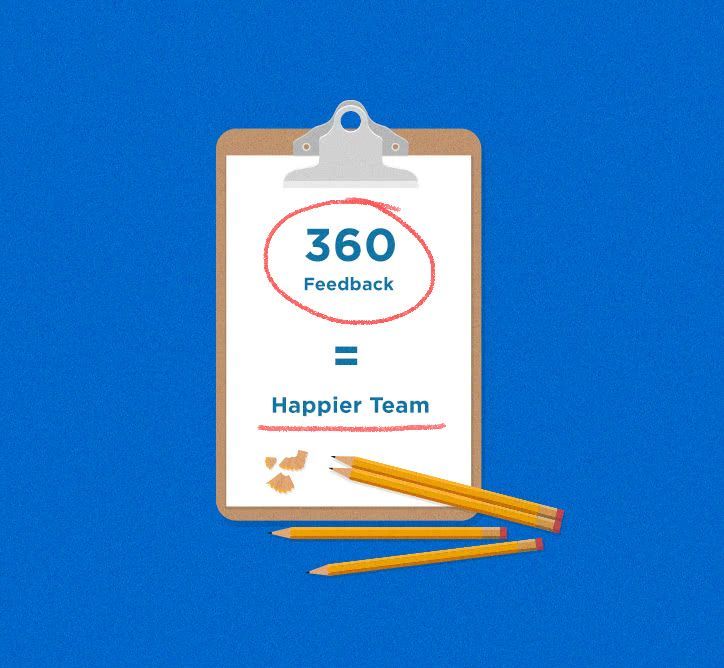Leadership – eight tips on how to raise employee engagement

The individual that has, by far, the biggest effect on employee engagement at the workplace is the employee’s closest manager. Having a “bad” manager or boss usually leads the employees to do the bare minimum at work and can even lead to your more gifted workers to start looking for career opportunities elsewhere, sometimes during work hours.
An international survey, by Gallup, shows that only 4 out of 10 people feel like their boss cares about them on a personal level. If this statistic were to be doubled, it would lead to an uptick of 10% in customer satisfaction, 46% fewer workplace accidents and the absence among employees would go down by 41%*. Good leadership does more than raise employee engagement at work; it helps prevent stress and mental health issues among the workers. It is also a major reason that employees do more than what is expected of them to help the organization reach their goals.
Try Questback 14 days for free.
Keep reading to learn about eight tips that will help you raise employee engagement through better leadership.
1. A good boss is more like a coach
Really good managers have open communication with their employees, both through formal and informal conversations about their performance and development at work. A good manager gives constructive and motivating feedback to help keep their employees focused on the goal – put simply, they are like good coaches
As individuals, we think it’s important to know how well we’re doing, how our performance is perceived and how these things potentially affect the future of our careers. Globally, only a third of survey respondents feel like there are people at the company who care about their development and their career goals. If twice as many employees were to feel like that the resulting effects would be 11% higher profitability, 6% higher customer satisfaction and a 28% drop in absence*.
Source: Gallup
2. Smarter goals
To be able to use smart and strategic targets for the employees to reach is incredibly important to keep engagement high. With clear goals the employees don’t only have a better ability to prioritize their time, being able to reach these set goals and targets also raises morale and boosts the confidence of your employees. It also makes the individual worker feel like they are actually contributing to the organization and not just working for the sake of working.
Unclear goals and targets that are too easy to reach or too high to be possible to achieve, on the other hand, could have the opposite effect, basically lowering the level of engagement among your employees. A smart target strategy is achieved when management and the employees set the goals together, leading to precisely the right amount of work for everyone. It’s important to take into consideration if the targets are achievable for the employee, or if he or she is just agreeing with your set goals without really thinking it’s possible.
To raise engagement even higher, a good manager needs to understand the targets for the organization on a larger scale and connect these to the everyday activities of each employee. The manager needs to understand how every individual below them in the company is contributing to the larger-scale goals.
3. Ask questions
By asking questions and actively listening, the manager will show his or her employees that their opinions have value, which in turn will lead to a boost in confidence among the workforce. A more confident group of people are less dependent on being micromanaged and can take more initiatives on their own. Good questions focus on finding solutions to problems and help start a dialogue about how each employee can reach their own targets.

Discover what truly motivates your employees so you can skyrocket your productivity and profitability.
Learn more4. Old school vs New school
Historically, a manager was supposed to be an authority figure, closely monitor the employees and micromanage everything. They were expected to perform yearly employee satisfaction surveys and have one sit-down with each employee, every year. An updated version of the older leadership model would sometimes have a performance review in February, salary negotiations in May, some sort of course or class in the fall and an employee meeting in October.
In a world that is changing much more rapidly, with working from home, the addition of consultants and temporary workers, this old school method of management is becoming more and more obsolete. In 2021, Microsoft ran a global survey that showed that 41%* of employees planned to leave their current job within a year.
A modern manager is someone who understands that the world is constantly going through changes. Gone are the yearly surveys as the only way to measure. To keep your talented employees with the company, you need to be an active leader with a presence that makes the employees feel like their needs are being taken care of and opinions heard, weekly. The modern boss creates an environment where employees are encouraged to manage their own work and set smarter, more achievable goals.

5. Create a non-judgemental culture
A manager is supposed to make big, decisive choices and take responsibility for the consequences, even if the suggestions ultimately came from an employee. Sometimes we make choices that lead to dire consequences but as an organization, it is important to share the blame, not to assign it. Successful organizations know to learn from their mistakes, not to look for scapegoats.
By focusing on courage, trust and the importance of learning from your mistakes, you help create a culture within the organization that encourages people to try new things, expand their views on issues and create innovations that in turn makes the future brighter for everyone in the building.
Source: Micael Bydén – Commander-in-Chief and Manager of the year 2021
6. Every opinion is valuable
Only about a fourth of people think that their opinions matter in their workplace. If twice as many employees felt heard, the turnover of staff in the organization would be 22% lower, the number of accidents at the workplace would be 33% lower and production would go up by 10%. By regularly asking for your employees opinions you also get a better feel for how management is doing and you help create an environment where your employees feel like they can share what they think and give suggestions that can ultimately lead to higher profitability.
Source: Gallup
7. Zero tolerance for offensive behaviour
To take shots at or make jokes at someone’s expense may seem harmless at times, it can even lead to laughter among your employees, but it doesn’t always mean that the person that is the butt of the joke is okay with being targeted in this manner. To stand up for and defend your colleagues will help with team-building and help everyone get on the same page. This is fundamental to create a safe working environment for everyone.
Source: Micael Bydén – Commander-in-Chief and Manager of the year 2021
8. Technological aids
We are all different. Some of us like to walk up to our boss and tell them what we think, while others take their issues home and discuss it with their partner or friends. This means that you, as a manager, only get to hear parts of what your employees are thinking that could lead to higher productivity or what might be bothering them at work. One, or more of your most valued employees might end up leaving the company because they have had a lingering issue in the workplace but didn’t have a way of communicating with management that suited them.
To help prevent this and to snap up other issues and great ideas that your employees are carrying around, you should use the technological tools available to you in this digital age. By regularly checking in and making sure everyone is healthy, happy and productive, you can not only prevent employees leaving, but also help find those small suggestions that might lead to huge positive changes in the organization. Read more about our employee survey tools here and create an account to start your Free trial today. Use our tools to check the pulse at work and make sure that everyone is happy working for the company.
Summary
Leadership is one of the most fundamental components when trying to make changes in employee engagement. Good leadership helps your employees reach their full potential while also feeling a sense of loyalty to the company, making it easier to turn down any potential job offers from your competitors. Is it easy being a good leader, a good boss? Absolutely not, nobody is saying it will be a cake-walk, but it is something you can get better at every day by learning more, listening and reading articles like this one. Try out our eight tips to be a better boss, starting now and see how it affects your employees.
Read more about Employee Surveys.
Do you want more articles like this? Read our other blog posts about raising employee engagement through proper communication and correct encouragement.









